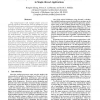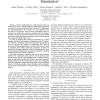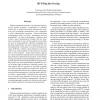2110 search results - page 398 / 422 » What is the complexity of a distributed computing system |
PPOPP
2012
ACM
12 years 4 months ago
2012
ACM
The actor model has already proven itself as an interesting concurrency model that avoids issues such as deadlocks and race conditions by construction, and thus facilitates concur...
HPCA
2007
IEEE
14 years 8 months ago
2007
IEEE
Chip multiprocessors with multiple simpler cores are gaining popularity because they have the potential to drive future performance gains without exacerbating the problems of powe...
CLUSTER
2007
IEEE
14 years 2 months ago
2007
IEEE
— Various mechanisms for fault-tolerance (FT) are used today in order to reduce the impact of failures on application execution. In the case of system failure, standard FT mechan...
IEEEPACT
2005
IEEE
14 years 2 months ago
2005
IEEE
Hiding communication latency is an important optimization for parallel programs. Programmers or compilers achieve this by using non-blocking communication primitives and overlappi...
CHI
2007
ACM
14 years 8 months ago
2007
ACM
We present the case study of a complex, mixed-initiative scheduling system to illustrate Work-Centered Design (WCD), a new approach for the design of information systems. WCD is b...



